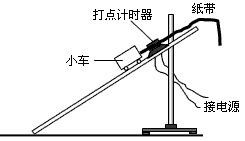Public schools in Washington, D.C. provide students with musical instruments for free. When something goes wrong with an instrument, Charles West and Larry Jernigan do the repairs. Both men approach their work with a passion(激情). For them, it’s important that students have a joyful experience with music.
The two have worked together for almost 20 years. This year alone, they’ve fixed about 450 instruments. Both men are musicians and music lovers, so learning to do repairs came naturally.
“I have been a musician all my life.” says West. “I played in an orchestra here in the city. I majored in music in college. I played in an army band.”
Jernigan’s musical interests are varied. “I was formerly trained in the piano and guitar. The alto sax, and the flute, I picked up while working here.”
In addition to fixing instruments, the two also go to schools to instruct teachers and students on how to make minor repairs on their own.
West believes if children start early and stay involved with music, it enriches other areas of their lives. “I see that in other kids. I see it in myself. I have seen it hundreds of times and it works,” he says. “They learn teamwork. They learn patience and respect.
But West has concerns about the future of music in the electronic age.
“This instant age has taken away from the sit-down, the patience. And to learn to play an instrument, it takes patience, it takes diligence, it takes time.”
Being able to enjoy music on the job is one of the benefits of the job. Both men agree their best rewards are the students’ performances.
小题1: What’s the job of West and Jernigan at school?
A.Teaching music.
B.Writing music.
C.Making musical instruments.
D.Repairing musical instruments.小题2:They love the job because they can .
A.earn more money
B.learn repair skills
C.enjoy music
D.watch performances小题3: Which of the following is true of the two men?
A.They have fixed 450 instruments in the past 20 years.
B.They can play and repair musical instruments.
C.Jernigan used to play in an army band.
D.West was trained to play the piano.小题4: According to West, what can people learn from music?
A.Teamwork and patience.
B.The value of time.
C.The truth of society.
D.Diligence and confidence.小题5: What is mainly talked about in the text?
A.How to repair musical instruments.
B.Learning experiences of two repairmen.
C.How to prepare a musical performance.
D.The enjoyable job of two music lovers.


 ;
; 为纵坐标、t为横坐标,标出
为纵坐标、t为横坐标,标出 -t图线。
-t图线。 

 -t图。
-t图。 
 -t图线判断,在打0计数点时,小车的速度v0=___________m/s;它在斜面上运动的加速度a=___________m/s2。
-t图线判断,在打0计数点时,小车的速度v0=___________m/s;它在斜面上运动的加速度a=___________m/s2。